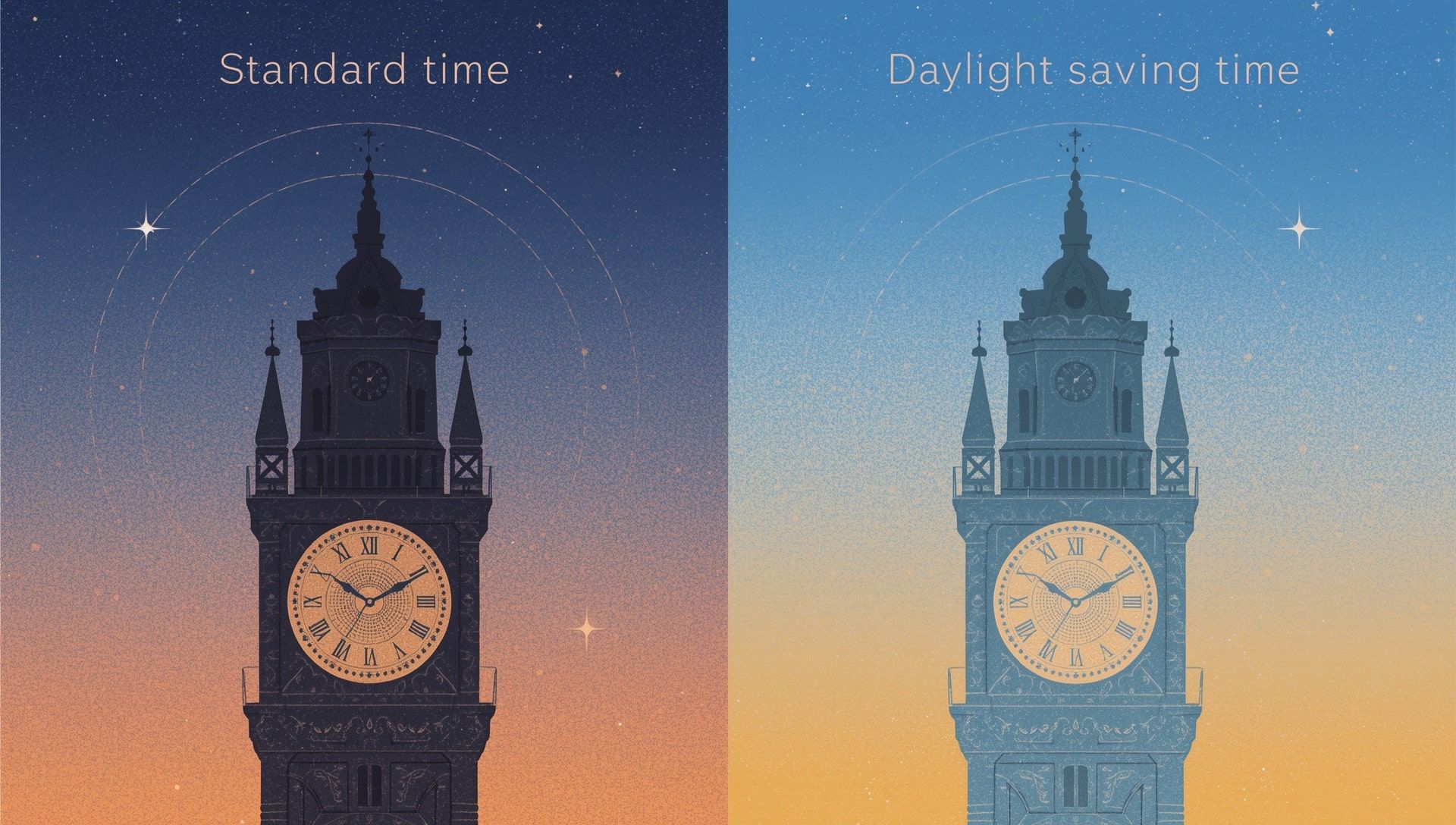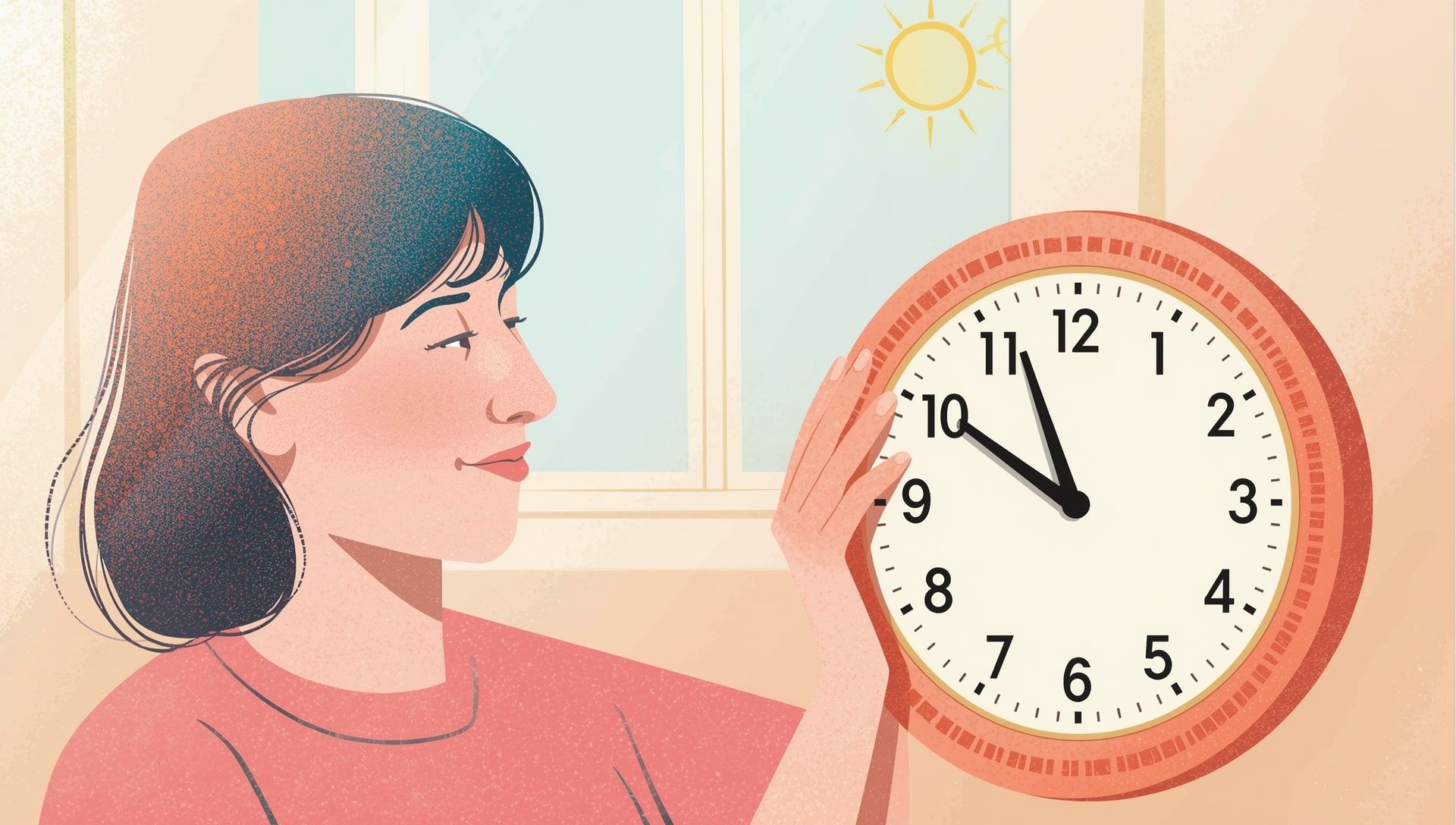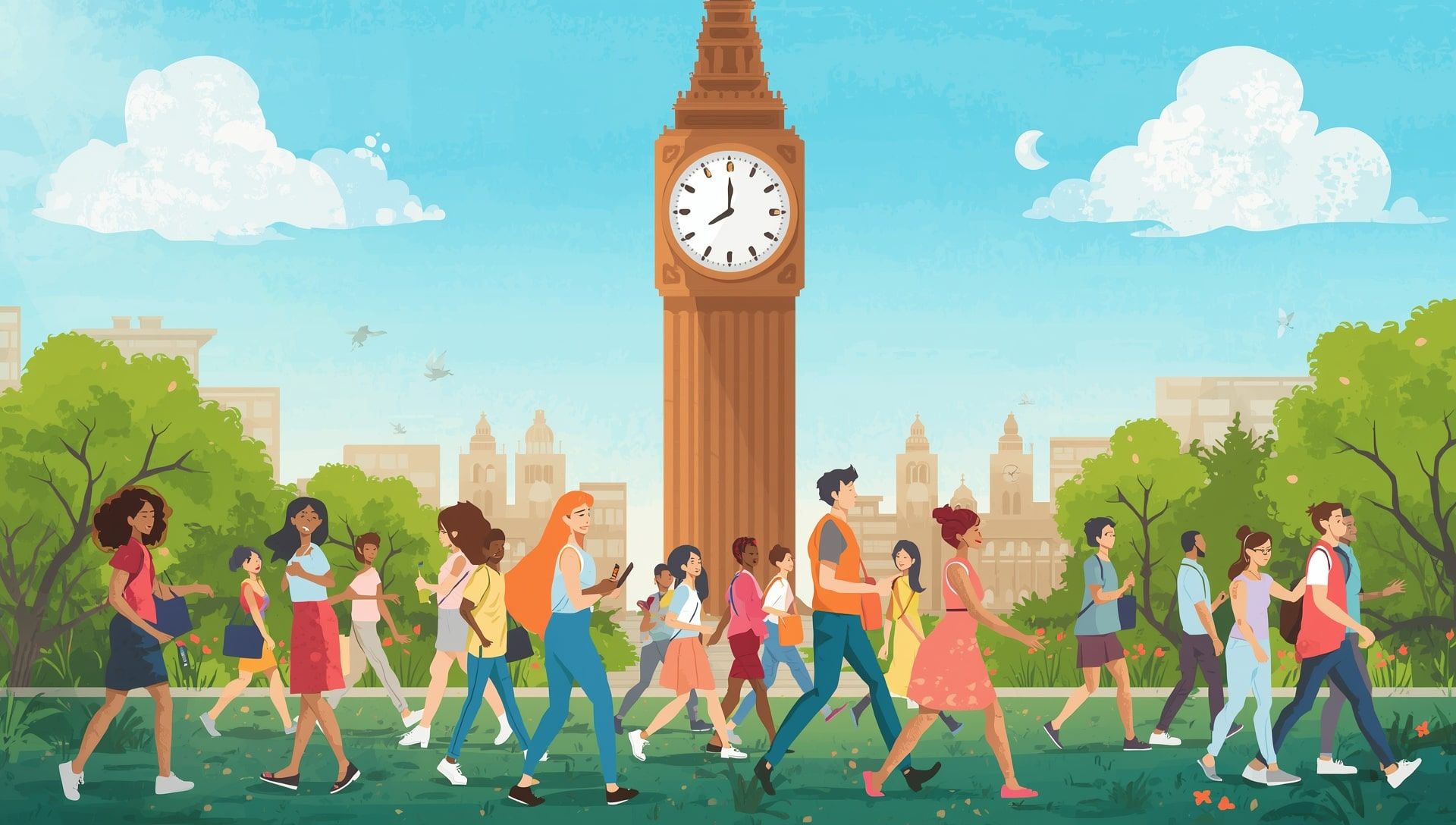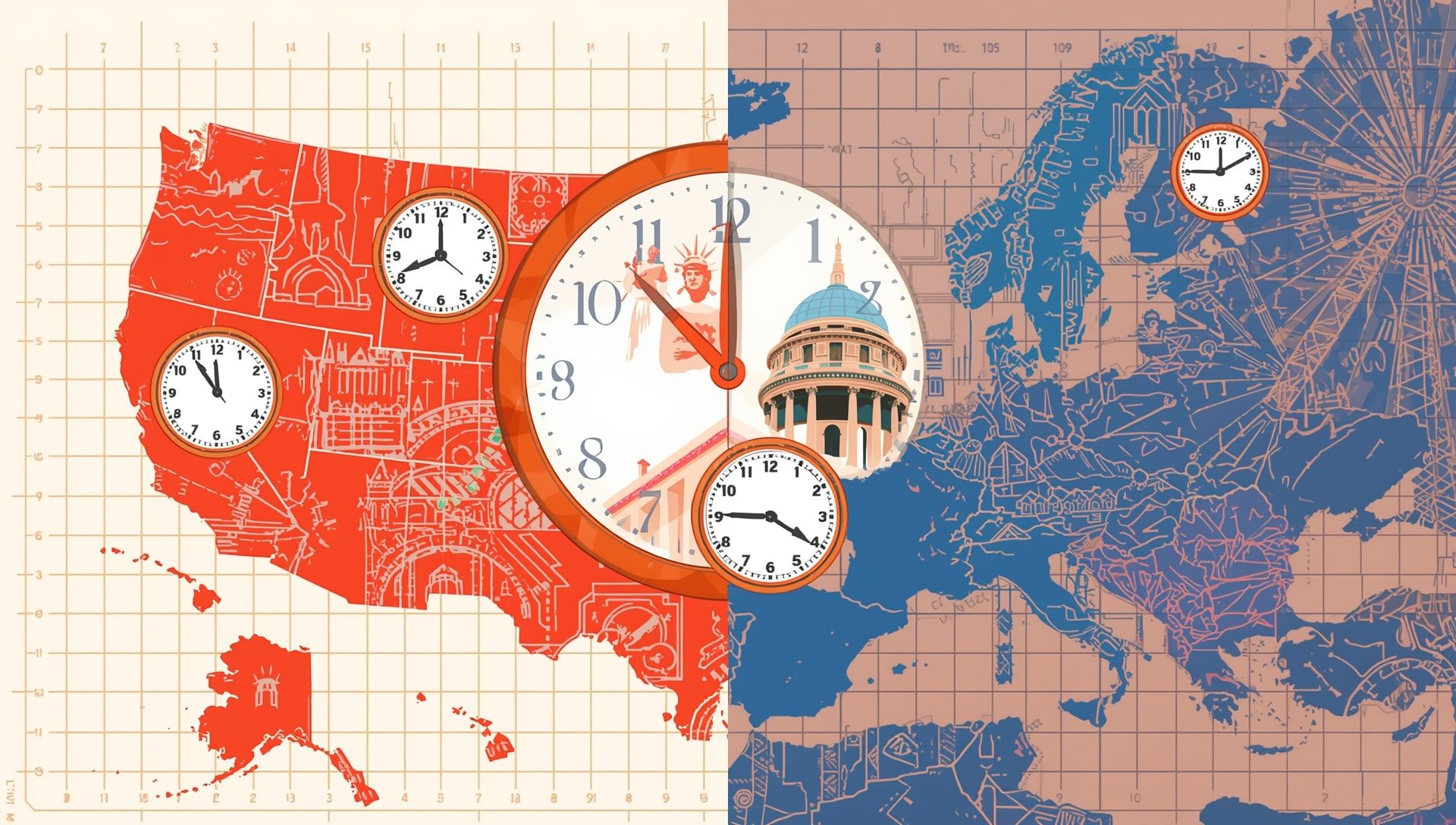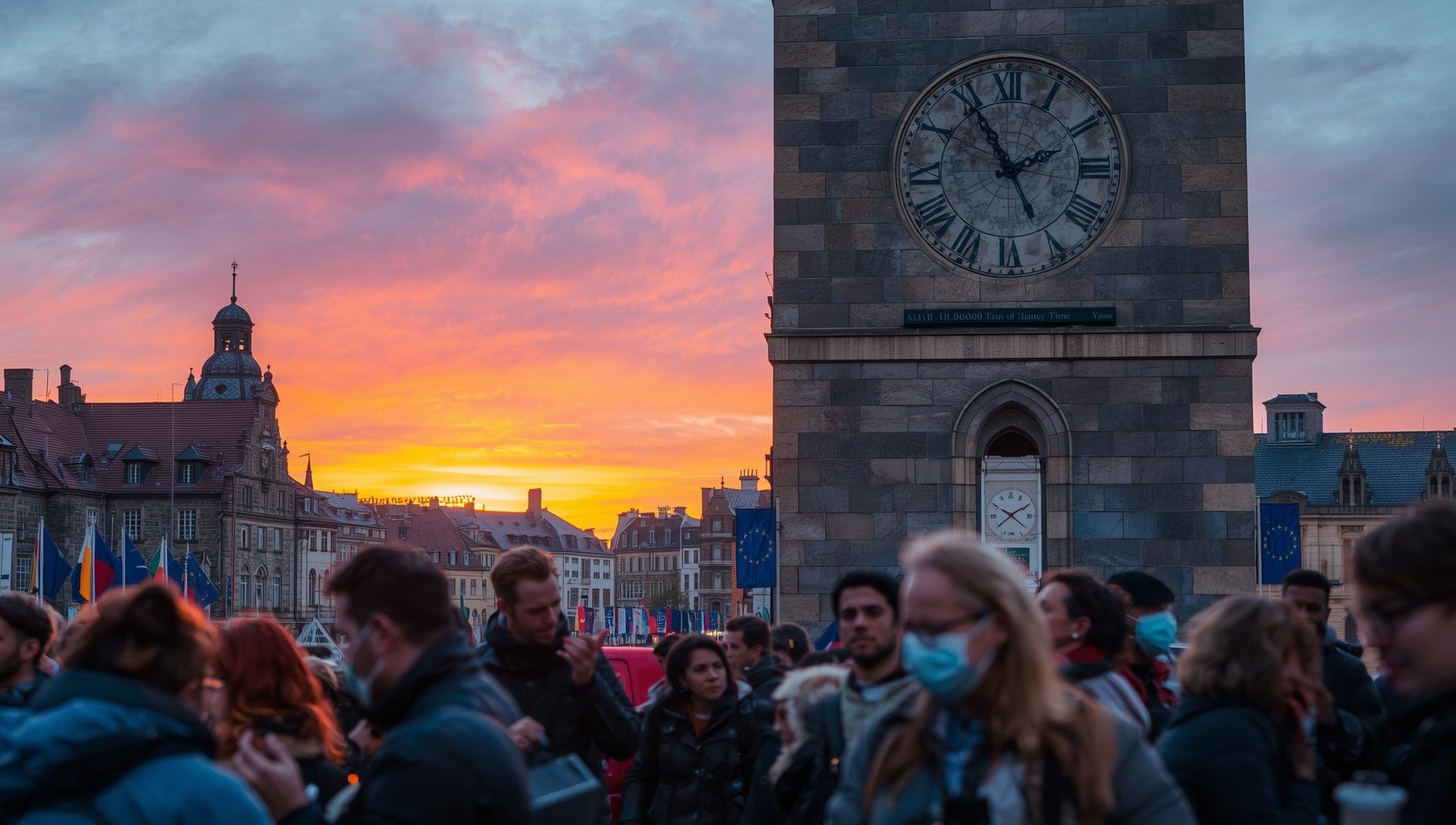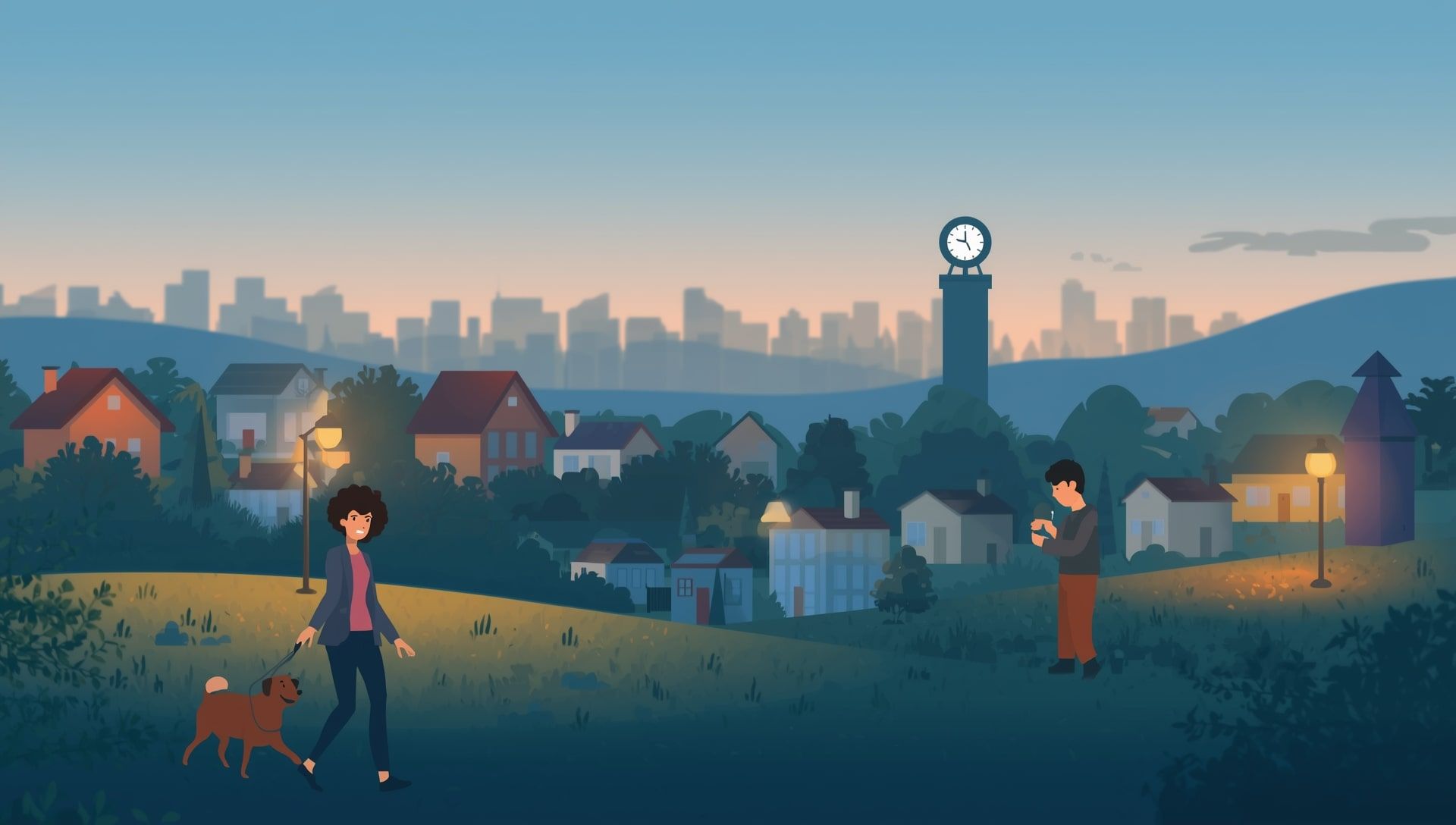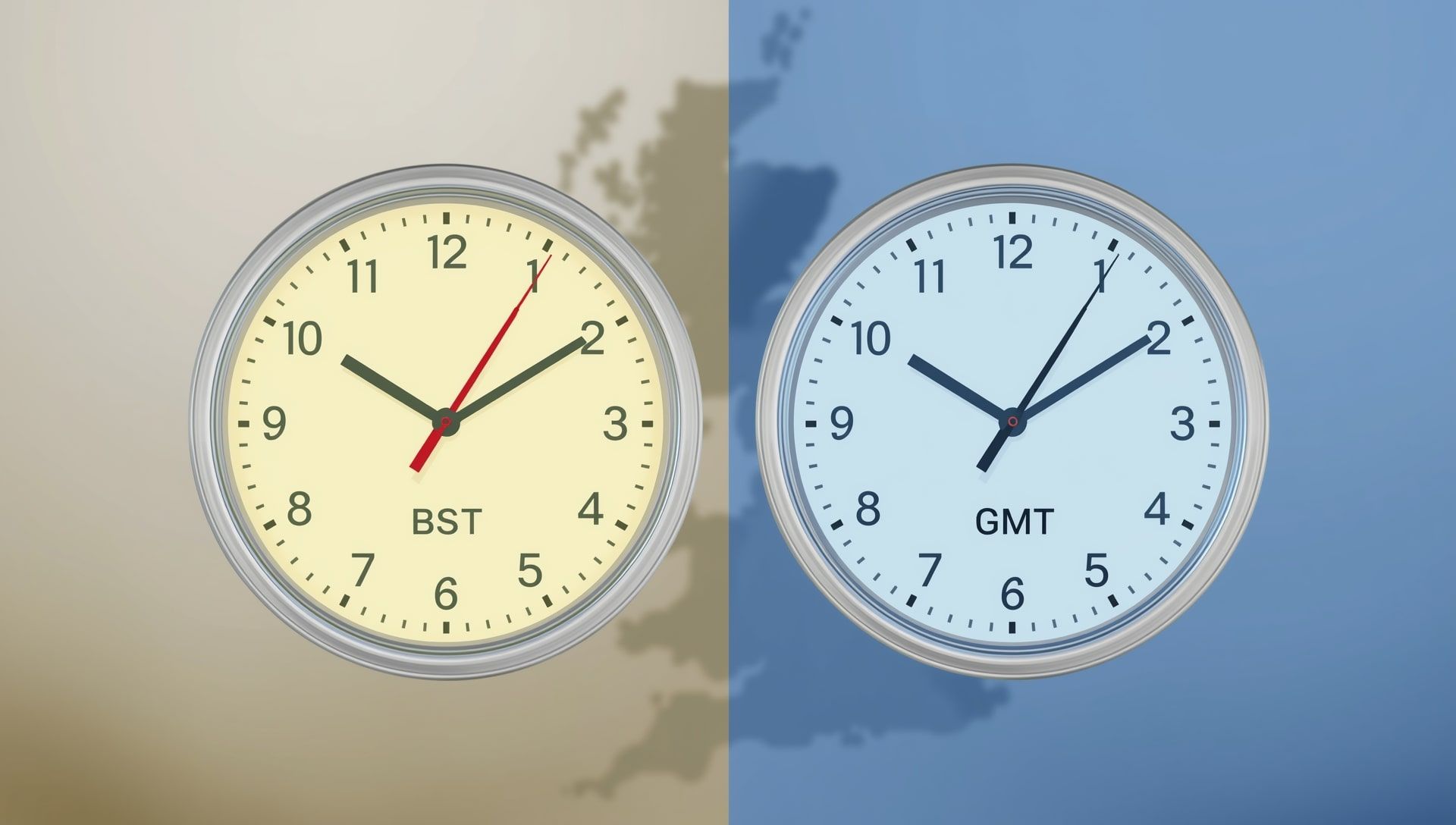When you hear people talk about moving the clock forward or back, what they are really comparing are two distinct systems of keeping time: Standard Time and Daylight Saving Time (DST). Both are designed to organize our lives around the movement of the sun, but they serve different purposes. Understanding how they work, and why we switch between them, reveals a lot about how societies balance tradition, convenience, and daylight.
The Birth of Standard Time
Before the 19th century, each city kept its own local time based on when the sun reached its highest point. Noon in one town could differ by several minutes from a neighboring one. That system worked until trains, telegraphs, and cross-country business made synchronization essential.
In 1883, American railroads introduced the first Standard Time zones, dividing the continental United States into four sections. A year later, the world adopted this concept internationally at the Meridian Conference, using the Greenwich Meridian in England as the global reference point. For the seasonal practice that arrived later, see this history of DST.
How Standard Time Works
Standard Time organizes the planet into 24 zones, each representing one hour of the Earth’s 24-hour rotation. The zones are defined by longitudes spaced roughly 15 degrees apart.
- Each time zone differs by one hour from its neighbor.
- Coordinated time standards and zones provide the global reference.
- Countries set their standard times relative to that reference.
- Some regions use offsets of 30 or 45 minutes to match local daylight better.
Under Standard Time, clocks stay aligned with the sun’s natural pattern throughout the year. To visualize regional rules at a glance, check a world time zone map.
The Introduction of Daylight Saving Time
Daylight Saving Time arrived decades later as a seasonal adjustment to Standard Time. The idea is to shift an hour of daylight from the early morning to the evening so people can enjoy more sunlight after work or school. For a plain-English primer, start with this overview of Daylight Saving Time.
The concept first gained traction during World War I, when nations looked for ways to conserve fuel. By pushing clocks ahead one hour in spring, households could rely less on artificial lighting. After the war, many countries dropped DST, only to bring it back during World War II for similar reasons. Learn more about the stated purpose of DST.
The Key Differences Between Standard Time and DST
The two systems share the same foundation but serve different goals. Here is how they compare in everyday terms:
| Aspect | Standard Time | Daylight Saving Time |
|---|---|---|
| Definition | Base time system aligned with solar position | Seasonal time shift, one hour ahead of Standard Time |
| Purpose | Maintain consistent, natural time year-round | Extend evening daylight and conserve energy |
| Implementation | Applies year-round unless DST is observed | Used in spring and summer months only |
| Effect on Clocks | No change | Clocks move forward by one hour |
| Return to Standard Time | Occurs in autumn when clocks move back | Ends when daylight hours shorten |
How the Transition Works
When Daylight Saving Time begins, clocks jump ahead by one hour, usually at 2:00 a.m. local time. People effectively lose an hour of sleep that night but gain an extra hour of evening light for the months ahead. When DST ends, clocks shift back one hour, returning to Standard Time and restoring that lost hour. If you need to convert meeting times cleanly, try these time zone converters.
- Spring, “spring forward” into DST, losing one hour of sleep.
- Fall, “fall back” into Standard Time, gaining one hour of sleep.
- Timing, happens on Sundays to minimize disruption.
In the United States, this pattern repeats every year. The switch to DST happens on the second Sunday in March and returns to Standard Time on the first Sunday in November. In Europe, DST runs from the last Sunday in March until the last Sunday in October. For areas that do not participate, see states that opt out of DST.
Impact on Daily Life
The clock shift affects more than sleep schedules. It influences productivity, energy use, and safety. Longer evening daylight can encourage outdoor activities and boost local economies. However, the sudden adjustment can temporarily disrupt sleep and concentration. For evidence on health risks around the change, see time change health effects.
Standard Time, by contrast, aligns more closely with natural light. Many scientists argue that it supports healthier sleep cycles because it matches the sun’s true position.
Countries That Stick With Standard Time
Not every nation adopts DST. Countries closer to the equator see minimal seasonal daylight changes, so adjusting clocks offers little benefit. Others have abandoned DST after finding it disruptive or ineffective. To compare local times quickly, use the world clock.
- Russia and Turkey remain on permanent Standard Time.
- China uses one national Standard Time for the entire country.
- Iceland and most of Africa never switch their clocks.
- In the United States, Hawaii and most of Arizona stay on Standard Time all year.
Will the World Ever End DST?
The idea of ending the twice-yearly clock change has gained traction. In 2019, the European Parliament voted to allow member nations to choose whether to keep DST or switch to permanent Standard Time. The United States has also seen proposals for permanent daylight or standard time, but federal approval is still pending.
The debate touches on more than convenience, it reflects how societies value daylight, health, and tradition. While technology can adjust clocks automatically, the human body still runs on nature’s time, which keeps this conversation personal. Keep an eye on regional policies and calendar updates as rules evolve.
Time’s Steady Companion, Standard Time
Standard Time remains the anchor of our global time system. It connects us to the sun’s rhythm, the seasons, and one another across continents. Whether or not Daylight Saving Time continues, Standard Time ensures that our world keeps turning in harmony with nature.
So next time you set your clock, remember, DST may come and go, but Standard Time is the quiet constant that grounds us in the passage of day and night, a reminder that even in our busy, modern lives, the sun still tells the time.
